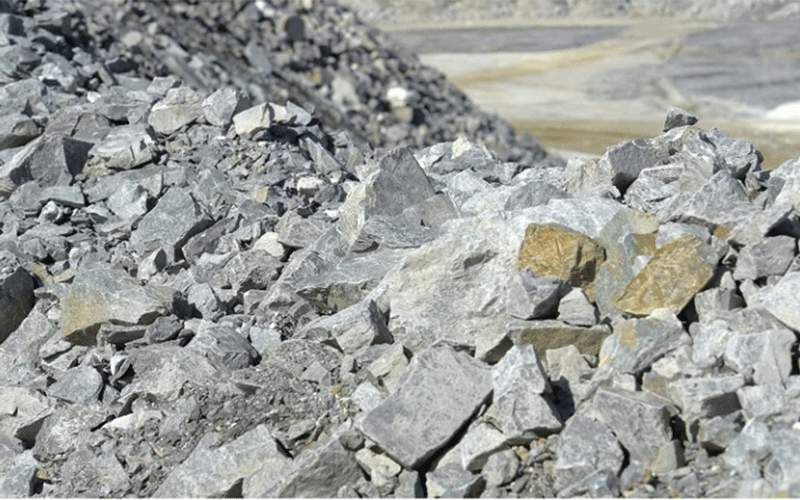Kuvimba hits jackpot with Sandawana lithium find

Lithium
..as mineral glitter continues to elude Mberengwa
By Freeman Makopa
Lithium is a key component of batteries and other electronics that are becoming increasingly common around the world — particularly in the case of rechargeable lithium-ion batteries used in electric-vehicle manufacturing, as well as larger-scale battery storage.
THE Sandawana Mines, which is controlled by Kuvimba Mining House, is sitting on an estimated 100 million tonnes of lithium resource, making it one of the biggest lithium assets in the world, the Zimbabwe Independent can exclusively reveal.
Lithium is a key component of batteries and other electronics that are becoming increasingly common around the world — particularly in the case of rechargeable lithium-ion batteries used in electric-vehicle manufacturing, as well as larger-scale battery storage.
Zimbabwe possesses Africa’s largest lithium reserves and the fifth largest globally but the resource has remained largely untapped due to a lack of investment.
There are around eight different lithium exploration and mining projects at different development stages in the country.
These include Arcadia Lithium Mine, Sabi Star Lithium, Sandawana Mines, Bikita Mine, Zulu Lithium Project, Step Aside Lithium Project, Prospect Lithium Zimbabwe, Mirrorplex Lithium Project, Kamativi Lithium Project, Mutoko Lithium Private Limited among others.
Kuvimba, which is wholly owned by the government, last year revealed that it will spend more than US$50 million on exploration programme. It contracted Chinese and local firms to carry out the exploration.
An insider, who spoke exclusively to Zimbabwe Independent, revealed that the purity of lithium is approximately 1,4%, which is high by international standards.
“When we talk about phase one and phase two, we are talking about phases of exploration, so we have done phase one of the exploration currently and phases two, three and four of the exploration will follow,” the insider said.
“The phases that we are discussing do not necessarily reflect the development of the project. It’s really about the exploration to define the resources that we have got. In exploration phase 1, we have completed all the drilling and we have completed most of the analysis of the samples.
“We have done that and the preliminary findings show that we have a resource of around 40 million tonnes of ore containing lithium and the quality of that lithium is around 1,4% lithium oxide and it might seem very little but from international standards it is really a significant resource.”
The company, which is one of the state-owned companies transferred to Mutapa Investment Fund, is anticipated to produce 550 000 tonnes of concentrates, translating
into potential income of US$250 million per annum, according to internal sources.
The first phase, under which more than 1 000 locals were employed (20% were women), was manual. The second phase involves mechanisation and automation of mining processing, with a skilled labour force.
“It’s very difficult to give a number in terms of revenue because it depends on many things. It depends on the value of the product, the value and the quality and currently what we reckon is we are going to produce between 500 000 and 550 000 tonnes of concentrate that should give us revenue per annum of over US$250 million per year,” the source said.
“That’s significant revenue that we will generate but these are dependent on international prices. It’s not a definite number, it’s an estimate based on current prices and current forecast on volume and quality of the product that we will produce.”
The area that they are mining constitutes around 1% of the total area and to date, it has mined and stockpiled over 900 000 tonnes of high-grade lithium ore.
“Some of the resources in Zimbabwe have a quality of 1 or 1,1% so the quality of our resource of high value and 40 million tonnes is quite a significant amount. We actually expect that once we go further and we complete the other phases of the exploration that we will more than double that outcome,” the source added.
“When we complete that work, we certainly believe that this will be the largest lithium resource in Zimbabwe. But these are all estimates.”
The firm is currently seeking potential partners to develop the mine.
Sources also noted that the group is looking forward to developing a mining processing plant with a capacity to process three million tonnes of concentrate.
“At this stage, we are looking at partnerships to fund the project and to actually develop the mine and the processing plant. There are two parts of this project that we want to develop,” the insider said.
“First of all, we want to develop the mine and over and above we want to develop the processing plant and the processing plant is to treat the ore that we mine and concentrate it. That’s the first step.
“Currently where we are from a mining perspective, we want to develop a mining process plant that can treat three million tonnes of ore that will be also significant in the national context and that processing plant will yield an amount of about 550 000 tonnes of concentrate per annum. At this stage the plan is to export that concentrate. We would like to produce lithium sulphate domestically here in Zimbabwe.”
According to the official, the firm requires between US$220 million and US$250 million funding for the project, which will take up to 24 months to implement.
“But that all depends on when we can access the funding. So, with these types of projects it takes quite a while to access your funding and once we get to that point the next step will be to implement,” the source added.
The firm expects to employ more than 1 500 people at the project.
Kuvimba took over Sandawana Mines in 2019 and has plans to make it one of the biggest lithium producers in the world.
It is one of the 21 companies under the Fund that have been exempted from formal tendering procedures, as provided by Public Procurement and Disposal of Public Assets Act.
The mine, once owned by Rio Tinto, is rich in vast mineral resources that include lithium, tantalite, copper and gold.






